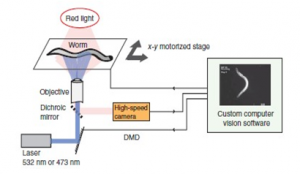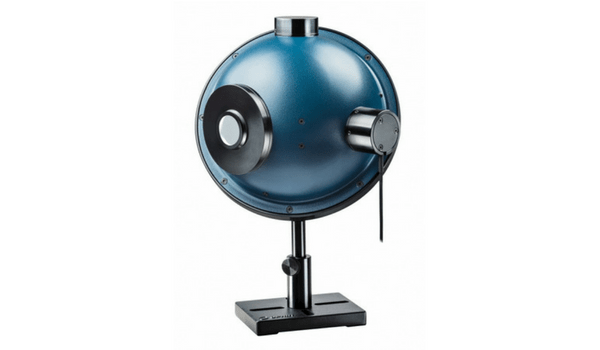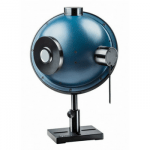 In order to better understand the neuronal origins of human behavior, scientists from Harvard University studied the response of Celegans (transparent nematodes – worms) to the application of strategically applied laser beams.
In order to better understand the neuronal origins of human behavior, scientists from Harvard University studied the response of Celegans (transparent nematodes – worms) to the application of strategically applied laser beams.
These Celegans have a well mapped, but simple nervous system which can serve as an adequate model for researching the human nervous system. The Celegans were genetically modified in order to research their distinctive behavior and to locate proteins in specific neurons that are responsible for certain behaviors, such as backward and forward movements and even reproductive activities.
Scientists from Harvard University designed an optogenetic illumination system called COLBERT (Controlling Locomotion and Behavior in Real-Time) [1] in order to track the freely moving, light sensitive worms. Once the locations of the targeted cells were estimated, high-resolution laser beams were administered to illuminate the cells and to further stimulate neuron activity. The power of the laser beams used were relatively small. The power accuracy measurements of the laser beams delivered to the worms may play a significant role in the results and the conclusions derived from the experiments. The power illumination of the laser should be measured very carefully before it is administered to ensure accurate results and to prevent damage to the proteins and/or the worm itself.
Occasionally scientists deliberately cause injury to the worms in order to gauge the aftermath. For example another group of scientists from Harvard University (guided by the Professor Eric Mazur) dissected sub cellular components of a neuronal circuit using a femtosecond laser scalpel [2]. In the past this was done using a nanosecond laser but the resolution was insufficient. Femtosecond lasers are capable of removing selected neuron parts with submicron precision that sometimes allow for functional recovery
The scientists surprisingly discovered that the neuronal fibers of Celegans were capable of re-growth and of even the neuronal functions which were destroyed by the laser can be restored. The nature of the neuronal regeneration depends on various factors: neuronal type, fiber type, the age of the worm and also the location and shape of the laser dissection. Thus, the laser power, pulse duration and the beam profile are critical to ensuring precise cuts and successful surgery.
Sources:
[1] Leifer A at al. Optogenetic manipulation of neural activity in freely moving Caenorhabditis elegans., Nature Methods.8:147–152 (2011)
[2] Chang at al. Femtosecond laser ablation of neurons in Celegans for behavioral studies. Appl Phys A 96: 335–341.(2009)
You might also like to read:
The Microscopic Structure of Air/Water Interface with Wireless Laser Connection
Beam Shaping for Space-Based Atmospheric Measurements
Share this:












Leave a Reply
Your email address will not be published. Required fields are marked *